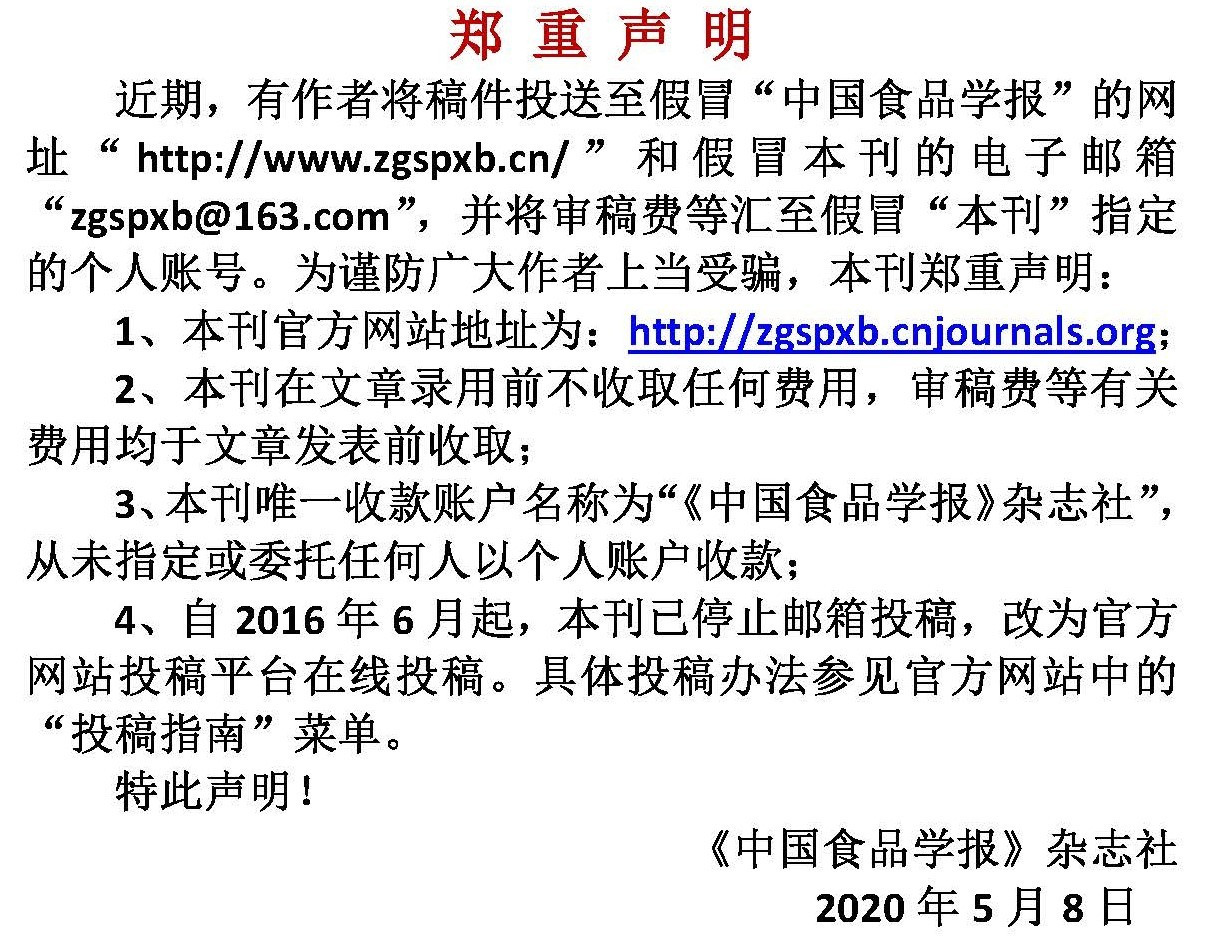产磷酸吡哆醛的功能性乳酸菌的筛选及其益生特性
作者:
作者单位:
(浙江工商大学食品与生物工程学院 杭州 310018)
作者简介:
通讯作者:
中图分类号:
基金项目:
国家自然科学基金项目(31171658);浙江省自然科学基金项目(LY21C200006)
Screening of Functional Lactic Acid Bacteria for the Production of Pyridoxal Phosphate and Its Probiotic Characteristics
Author:
Affiliation:
(School of Food Science and Biotechnology, Zhejiang Gongshang University, Hangzhou 310018)
Fund Project:
引用本文
于平,刘航,朱志文,陆佳杰,王配泽,鄢楚洋,管付瑶.产磷酸吡哆醛的功能性乳酸菌的筛选及其益生特性[J].中国食品学报,2025,25(3):64-72
复制相关视频
分享
文章指标
- 点击次数:
- 下载次数:
- HTML阅读次数:
历史
- 收稿日期:2024-03-19
- 最后修改日期:
- 录用日期:
- 在线发布日期: 2025-05-23
- 出版日期:
文章二维码

版权所有 :《中国食品学报》杂志社 京ICP备09084417号-4
地址 :北京市海淀区阜成路北三街8号9层 邮政编码 :100048
电话 :010-65223596 65265375 电子邮箱 :chinaspxb@vip.163.com
技术支持:北京勤云科技发展有限公司
地址 :北京市海淀区阜成路北三街8号9层 邮政编码 :100048
电话 :010-65223596 65265375 电子邮箱 :chinaspxb@vip.163.com
技术支持:北京勤云科技发展有限公司
